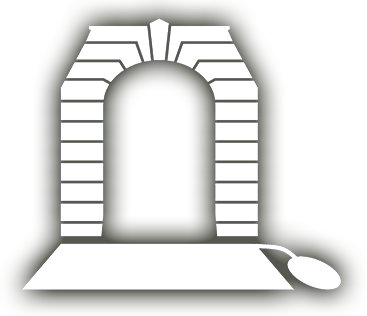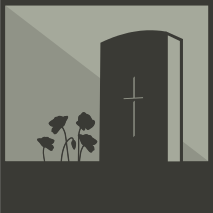
FRENCH, George Timothy
| Service Number: | 3805 |
|---|---|
| Enlisted: | 19 July 1915 |
| Last Rank: | Lieutenant |
| Last Unit: | 26th Infantry Battalion |
| Born: | Northampton, England, United Kingdom, 16 May 1879 |
| Home Town: | Woodford, Moreton Bay, Queensland |
| Schooling: | Brisbane Normal School, Queensland, Australia |
| Occupation: | Storekeeper |
| Died: | Died of wounds, Belgium, 5 October 1917, aged 38 years |
| Cemetery: |
Lijssenthoek Military Cemetery Plot: XX. E. 20. |
| Tree Plaque: |
Woodford Avenue Of Honour
|
| Memorials: | Woodford Honour Roll |
World War 1 Service
| 19 Jul 1915: | Enlisted AIF WW1, Private, 3805, 26th Infantry Battalion | |
|---|---|---|
| 12 Dec 1915: | Promoted AIF WW1, Lieutenant, 26th Infantry Battalion | |
| 31 Jan 1916: | Involvement Lieutenant, 26th Infantry Battalion, Third Ypres, --- :embarkation_roll: roll_number: '15' embarkation_place: Brisbane embarkation_ship: HMAT Wandilla embarkation_ship_number: A62 public_note: '' | |
| 31 Jan 1916: | Embarked Lieutenant, 26th Infantry Battalion, HMAT Wandilla, Brisbane |
Help us honour George Timothy French's service by contributing information, stories, and images so that they can be preserved for future generations.
Add my storyBiography contributed by Claude McKelvey
George French was born George Timothy Frenck on 16 May 1879 in Northampton, England, a son to Timothy French and Sarah French (nee Cooper). He served in the South African (Boer) War as George French and in WW1 as George Timothy French.
First service was as a Private S.N. 81 in the 3rd Queensland Mounted Infantry, Boer War. Following that service he was also part of the Coronation Contingent. Following his return from Boer War service he married Maltilda Ellen King in Queensland on 21 Apr 1909 and they would have a son and daughter. He was a storekeeper at Woodford in Queensland when he enlisted for WW1 in 1915.
His second service was as a Lieutenant in the 26th Infantry Battalion AIF, WW1. His Application for a Commission and enlistment Attestation Paper in 1915 notes his previous Boer War service in the 3rd QMI and Coronation Contingent. He suffered shrapnel wounds to the chest and died on 5 Oct 1917, Flanders, Belgium.
(source- AWM Boer War Nominal Roll, Murray p. 468; Coronation Contingent, The Telegraph (Brisbane), 7 Oct 1902, p.2; National Archives Australia WW1 service record).
Biography contributed by Ian Lang
# 3805 FRENCH George Timothy 26th Battalion
George French was born in Wordstone, Northampton, on 16th May 1879. He and his family emigrated to Queensland when George was two years old. The family settled in Brisbane and George attended the Brisbane Central School (also known as Brisbane Normal). As a young man, George enlisted in the Queensland Artillery, a volunteer part time force which was part of Queensland’s Colonial Force prior to federation; in which he served for three years.
While still a member of the QA, George enlisted in the 3rd Contingent Queensland Mounted Infantry for service in the Boer War. The contingent departed Brisbane in March 1900 and saw service with the British forces in the Transvaal and Rhodesia (Zimbabwe). While the conflict in South Africa continued, Queen Victoria died in January 1901. The QMI contingent returned to Queensland in June 1901 and George was selected as one of 130 men who would make up the contingent for the coronation of Victoria’s successor, King Edward VII and Queen Alexandria.
The coronation took place at Westminster Abbey on 9th August 1902. The event was planned as a spectacle demonstrating Britain’s Imperial Power and the crowned heads and lesser royals of many nations were in attendance. Following the coronation, a procession of members of the armed forces of Britain, the Dominions and British Colonies around the Empire marched through the streets of London. The Australians were provided with brand new uniforms for the occasion and all, being veterans of the Boer War, were presented with the Queen’s South Africa Medal and the Edward VII Coronation Medal.
Upon his return to Queensland, George joined the Queensland Police and was commissioned as a constable in July 1903. He was stationed at Roma Street before being posted to Hopetoun between Miles and Goondiwindi and then Townsville. George was a member of the Queensland Police Rifle Club and in 1906 won the prestigious King’s Prize. George resigned from Queensland Police in August 1908. He moved to Woodford where he married Matilda “Till” King. Till’s mother owned a shop in Woodford and the couple continued to live in Woodford where George worked in the shop. By the time of George’s enlistment, he and “Till” had a daughter, Muriel, and a son, Thomas.
George travelled by train to Brisbane to enlist in the AIF on 19th July 1915. He informed the recruiting officer that he was 36 years old and a veteran of the Boer War. He stated his occupation as storekeeper. George spent some time in a depot battalion at Enoggera before being allocated to the 9th draft of reinforcements for the 26th Battalion. George was promoted to the rank of temporary sergeant, no doubt on account of previous military service. On 18th December, George completed an application for commission as an officer. The 9threinforcements embarked on the Wandilla in Brisbane on 31st January 1916. The embarkation roll shows George as one of nine new lieutenants. He allocated ten shillings from his overseas daily pay to Till and the children; leaving 4/6d for his own use.
There is a large gap in the records for 2nd Lt George French from January to November 1916 but it is most likely that once he landed in Egypt, he was taken on by the 26th battalion at the AIF depot at Moascar. The 26th Battalion, as part of the 7th Brigade of the 2nd Division AIF was one of the first Australian units to be sent to France and the Western Front. The four battalions of the 7th Brigade spent some time in and around Morbecque as they learnt the routines of the front. Most of the men in the 26th Battalion had already seen action at Gallipoli but the Western Front would prove to be a bigger, more dangerous experience. During their initial acclimatization, the men had time to spend their pay in the cafes of the villages behind the front where egg and chips and beer and wine could be obtained. During May, the battalion began to take turns with the other 7th Brigade battalions manning the trenches and breastworks at the front. The area around Armentieres was totally unsuitable for large frontal attacks due to the marshy ground and the Australians had to content themselves with small raids conducted against the German line at night.
The pleasant routine of that Spring came to an end in July 1916. General Haig, Supreme British commander on the Western Front was planned a big push in the south of the British sector through the Somme River valley for the summer of 1916. It was to be the largest battle of the war so far, and was timed to commence on the 1st of July. The attack was a disaster, with the British suffering 60,000 casualties on the first day, 20,000 of whom were killed. In spite of this setback, Haig was determined to push on and the 1st, 2nd and 4th Australian Divisions were moved south from the Armentieres sector to Albert to take part in the Somme offensive.
The village of Pozieres half way between Albert and Bapaume, sat on the highest point of that part of the battlefield. Pozieres was taken by the 1st Division on 26th July. The second division’s objective was to take a blockhouse which had been built on the site of a windmill in the village of Pozieres. The windmill was behind two lines of trenches, and provided a panoramic view of the surrounding countryside. The attack, the first major offensive by the 26th Battalion since arriving in France, was to begin just after midnight on the 29thJuly. The attack was a failure, with the 26th Battalion suffering 300 casualties (from a strength of a little less than 1000 men). George French would have led the men in his section in the advance. A second attack, which was more successful was launched by the brigade on 5th August. The 26th battalion were relieved on the 6th August and began to make their way back to the rear areas for a period of rest and to take on reinforcements. At the end of the month, the 7th brigade was moved back to the front lines at Pozieres for the last time to perform fatigue and salvage work. For junior officers such as George, Pozieres was a dreadful experience. He would have seen many of his men blown up and buried by high explosive shells. The German artillery barrage was relentless and all ranks were completely exhausted. By September 1916, the 7th Brigade was resting in Belgium around Poperinghe where there was time for battalion and brigade sports, visits to the divisional baths and local leave. Many of the 7th Brigade men, particularly the 25th and 26th battalions, came from farming backgrounds and they relished the opportunity to help the Belgian farmers bring in the hops crop. The rest period came to an end for the 26th with a move back to the Somme at the end of October.
The official records for George resume on 1st November 1916 when it is reported that he was admitted to the Fargo War Hospital in England with a mild heart condition, perhaps brought on by the experience at Pozieres and the prospect of a return to front. On 1st January 1917, George was seconded to the 7thBrigade Training Battalion at nearby Rollestone. The training battalion took on all the reinforcements arriving from Australia for the 7th Brigade, as well as sick or wounded who had been discharged from hospital in England. George remained in the training role until the end of April 1917 when he was redeployed to his battalion.
George’s return to the war zone coincided with a change in strategy by General Haig after the failure to breach the Hindenburg Line. Haig’s attention turned to the Ypres salient in Belgium where he believed he could turn the flank of the German occupiers in Belgium by a well-resourced campaign in Belgian Flanders near the French Belgian border. With the arrival of Monash’s 3rd Division on the Western Front in November 1916, the AIF was a full five divisions strong and would play an important part in the coming battles. For the men of the 2nd Division, which included the 26th Battalion, the next four months would be spent in the rear areas of France training in new weapons and techniques which would be put to use in the Autumn of 1917.
The plan for the 3rd Battle of Ypres (most often referred to as Passchendaele) was based on a strategy of “Bite and Hold” in which small strategic gains, supported by overwhelming firepower, would provide a series of stepping stones along the line of the Ypres to Menin Road. The first phase involved driving the enemy off the Messines Ridge, which the Germans had occupied since 1914. This was achieved after heavy fighting and the firing of nineteen underground mines on 7th June 1917. The 2nd Division of the AIF was not part of the Messines battle but their turn would come soon.
On 29th August, in preparation for a coming battle, George was sent to the divisional bomb (grenade) school for seven days. On his return, his job was training the infantrymen on the use of the Mill’s Bomb (hand grenade) which would be important in the coming battles. On the 9th September, the men of the 2nd Division moved up to positions at Steenvoorde in preparation for an assault on Westhoek Ridge, the high ground that overlooked the main route east; the Menin Road. A detailed model of the ground had been constructed with planks suspended over the sand so that officers and NCOs could familiarize themselves with the battlefield and the objectives they were expected to take. The 26th Battalion, in conjunction with the other three battalions of the 7th Brigade were in position at the jumping off tapes by midnight of the 19th and at 5:40am on the 20th, a massive artillery barrage crashed down on the German positions. As the barrage crept forward, the infantry kept pace, dealing with isolated pill boxes and gun emplacements whose occupants quickly surrendered. The Battle of Menin Road was, by the terms of the time, a great success. The battalions of the two AIF divisions that had taken part at Menin Road were relieved and two other divisions took advantage of the result to push the line even further into Polygon Wood and the approaches to the high ground of Broodseinde Ridge and the villages of Zonnebeke and Passchendaele.
On 4th October, twelve British Divisions ( which included three AIF Divisions and the NZ Division) attacked Broodseinde Ridge along a thirteen kilometre front. As the 26th battalion men rose up to follow the creeping barrage up the slope towards Zonnebeke, they encountered German infantry advancing up the reverse slope. Both the British and the Germans had made plans to attack on the same day, and at the same time. The Australians got the better of the encounter. The 26th Battalion advanced to the objective, Zonnebeke railway station, and by 10:00am the position was secure. During the advance, George, while leading his platoon, received a severe chest wound. He was being accompanied by his batman who was also wounded at the same time. George was evacuated to the battalion dressing station by stretcher bearers and then via the 3rd Field Ambulance was conveyed by light rail to the 17th Casualty Clearing Station at Poperinghe. The wound, described as severe, had been caused by a shell splinter penetrating George’s chest. George succumbed to his wound the following day, 5th October and was buried in the Lijssenthoek Military Cemetery, adjacent to the CCS on 6th October. He was 36 years old.
George’s personal effects, packed into his officer’s valise and a kitbag were sent to his wife in Woodford. As an officer, George was expected to have purchased his uniform (ordinary soldiers were issued a uniform which was not their property) and this full kit, less sword or revolver, was sent to Till. Till was granted a pension of £3/10/- a fortnight. Muriel was granted £1/-/- and Thomas 15/-.
At the end of the war, permanent headstones were erected in military cemeteries by the Imperial War Graves Commission. Lt George French’s inscription reads: LOVING MEMORY SADLY MISSED, HIS WIFE DAUGHTER AND SON, TILL MURIEL AND TOM. Around the time that medals were being distributed to next of kin, Till received an account from an outfitters, Berkley’s of Victoria Street London, which had been helpfully forwarded by the authorities in Melbourne. The account was probably for some uniform items. There is no indication if the account was ever paid.
A marble plaque commemorating George French’s sacrifice was placed by his wife and children in St Matthias’ Church in Woodford and a tree and plaque still exists in the Memorial Avenue of Trees in Archer Street, Woodford. Till and the children eventually left Woodford to live in Brisbane.












